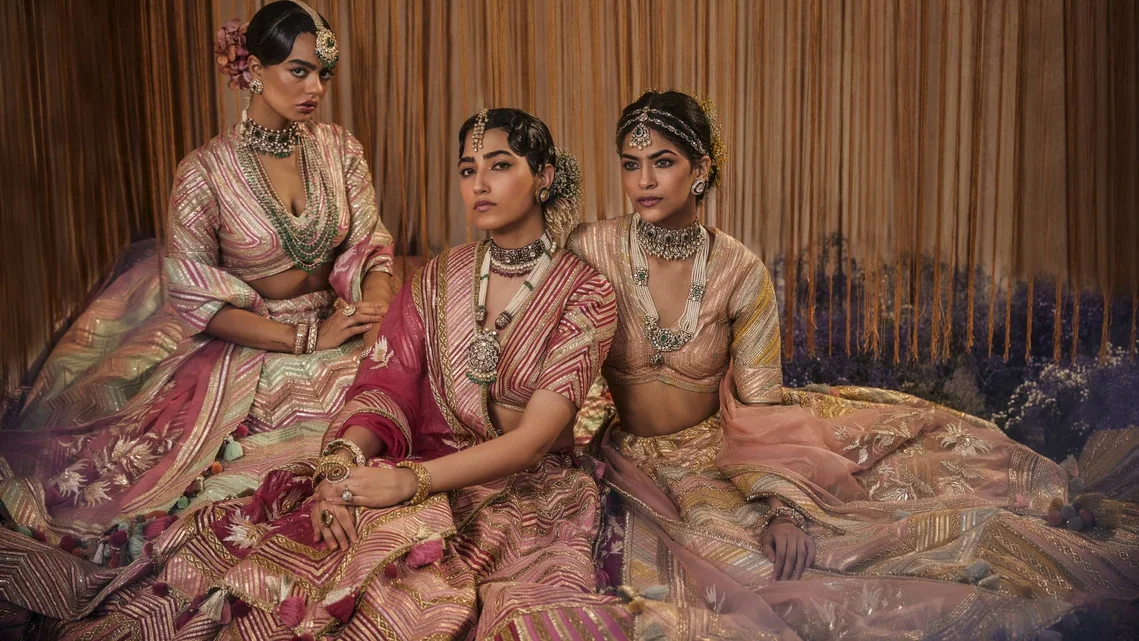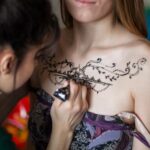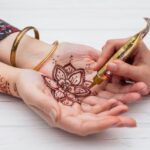Discover the allure of traditional women outfits for special occasions, blending cultural heritage with modern style.
When it comes to special occasions, there’s something undeniably enchanting about traditional women’s outfits. These garments aren’t just clothing; they’re a celebration of culture, history, and identity. Whether it’s a wedding, festival, or milestone event, traditional attire often carries a sense of gravitas and beauty that modern outfits sometimes lack. And let’s be real, who doesn’t want to feel like they’re wrapped in centuries of tradition while looking absolutely stunning?
Table of Contents
The Allure of Traditional Outfits
Why We Gravitate Toward Tradition
Ever wonder why traditional women outfits are so popular for special occasions? Well, there’s something deeply comforting about connecting with your roots. Whether it’s the intricate embroidery of a Sari, the vibrant colors of an African Kente cloth, or the classic elegance of a Kimono, these outfits tell a story. They’re a physical manifestation of the values, beliefs, and artistry passed down through generations.
Moreover, traditional outfits are often made with a level of craftsmanship that’s hard to come by in today’s fast fashion world. We’re talking about hand-sewn details, luxurious fabrics, and designs that have been perfected over centuries. Wearing such an outfit isn’t just about looking good—it’s about honoring the legacy that comes with it.
The Emotional Connection
Another reason we reach for traditional attire on special occasions is the emotional connection. Wearing something your grandmother wore, or a design that’s been in your family for generations, isn’t just fashionable; it’s meaningful. It adds an extra layer of sentimentality to the occasion, making it all the more memorable.
Standing Out with Tradition
Let’s not forget one of the main reasons people opt for traditional women outfits for special occasions: they stand out. In a sea of cocktail dresses and evening gowns, a beautifully draped Sari or a gorgeously adorned Hanbok will make you the center of attention. And isn’t that what special occasions are all about?
Traditional Outfits from Around the World
The Grace of the Indian Sari
When it comes to traditional women outfits for special occasions, the Indian Sari is probably one of the most iconic. This timeless piece of fabric, often several meters long, is draped elegantly around the body, creating a look that’s both graceful and regal.
- Variety in Fabrics: Saris come in a plethora of fabrics, each suited for different occasions. Silk is often reserved for weddings and grand celebrations, while cotton saris are perfect for more casual events.
- Intricate Embroidery: The beauty of a Sari often lies in its intricate embroidery. Zari work, which uses gold and silver threads, is especially popular for weddings and other grand occasions.
- Versatile Draping Styles: Depending on the region and the occasion, Saris can be draped in various styles. The Nivi drape is the most common, but there are others like the Bengali, Gujarati, and Maharashtrian styles that add regional flavor to the ensemble.

The Elegance of the Japanese Kimono
The Kimono is another traditional outfit that’s synonymous with elegance and tradition. Originating in Japan, this garment is often worn on special occasions like weddings, tea ceremonies, and festivals.
- T-shaped Silhouette: The Kimono’s design is relatively simple—it’s a T-shaped robe with wide sleeves—but the devil is in the details. The choice of fabric, the length of the sleeves, and the Obi (a wide belt) can all signify the wearer’s status and the occasion’s importance.
- Symbolism in Patterns: The patterns on a Kimono are far from random. Cherry blossoms, cranes, and other motifs often carry symbolic meanings, like good fortune or longevity.
- Layering and Accessories: Kimonos are often worn with multiple layers, especially in formal settings. Accessories like Kanzashi (hair ornaments) and Zori (traditional footwear) complete the look.

The Vibrancy of African Attire
African traditional women outfits for special occasions are known for their vibrant colors, bold patterns, and deep cultural significance. Whether it’s the Kente cloth from Ghana or the Boubou from West Africa, these garments are a feast for the eyes.
- Kente Cloth: This handwoven cloth from Ghana is often worn during important ceremonies. The different colors and patterns in a Kente cloth hold specific meanings—yellow symbolizes fertility, blue represents peace, and green stands for renewal.
- Boubou: The Boubou is a flowing gown worn by women in West Africa. It’s often made from richly embroidered fabrics and is a popular choice for weddings and religious ceremonies.
- Gele: No traditional African outfit is complete without a Gele—a headwrap that adds an extra touch of elegance and status.

The Opulence of the Chinese Qipao
The Qipao, also known as the Cheongsam, is a traditional Chinese dress that exudes elegance and sophistication. Originally worn by the Manchu women during the Qing dynasty, the Qipao has evolved into a modern fashion staple for special occasions.
- Body-Hugging Silhouette: Unlike many traditional outfits, the Qipao is known for its figure-hugging design, which accentuates the wearer’s curves. This makes it a popular choice for formal events like weddings and banquets.
- High Collar and Side Slits: The Qipao typically features a high collar and side slits, which add a touch of modesty while allowing ease of movement.
- Luxurious Fabrics: Traditionally made from silk, modern Qipaos are often adorned with elaborate patterns and embroidery, making them perfect for high-end celebrations.

The Evolution of Traditional Outfits
How Modern Trends Influence Tradition
Traditional women outfits for special occasions have not remained static; they’ve evolved over time, incorporating modern elements while retaining their cultural essence. It’s not uncommon to see Saris with contemporary prints, Kimonos with a modern twist, or Qipaos made from unconventional materials.
- Fusion Fashion: A growing trend is the fusion of traditional and modern styles. Think of a Sari paired with a crop top, or a Kimono worn over jeans. This blending of old and new allows women to express their individuality while still honoring their heritage.
- Sustainability: As the world becomes more conscious of environmental issues, there’s been a shift toward sustainable fashion. Traditional outfits, often made with natural fabrics and dyes, are gaining popularity as eco-friendly choices for special occasions.
Technology Meets Tradition
Technology is also playing a role in the evolution of traditional outfits. From online boutiques offering custom-made Kimonos to apps that help you choose the perfect Sari draping style, the digital age has made it easier than ever to access and personalize traditional attire.
How to Choose the Perfect Traditional Outfit
Consider the Occasion
The first thing to consider when choosing a traditional outfit for a special occasion is the nature of the event. A wedding calls for something grand and opulent, while a festival might require something more colorful and festive.
Think About Comfort
While it’s important to look good, comfort should also be a priority. If you’re attending an all-day event, you’ll want something that allows you to move freely and doesn’t weigh you down.
Pay Attention to Color
Color plays a significant role in traditional outfits. For example, red is often associated with weddings in many cultures, while white might be reserved for funerals. Make sure the color of your outfit aligns with the occasion’s significance.
Don’t Forget the Accessories
Accessories can make or break your outfit. Whether it’s a traditional headpiece, jewelry, or footwear, make sure everything is coordinated for a polished look.
FAQs
What is the most popular traditional outfit for weddings?
The Sari in India, the Kimono in Japan, and the Qipao in China are among the most popular traditional outfits for weddings. Each of these garments is rich in cultural significance and often features luxurious fabrics and intricate details.
Can I mix modern and traditional elements in my outfit?
Absolutely! Fusion fashion is a growing trend, allowing you to mix modern elements with traditional attire. Just make sure the overall look remains cohesive and respectful of the cultural significance of the traditional garment.
How can I make sure my traditional outfit is authentic?
To ensure authenticity, it’s best to buy from reputable sources or artisans who specialize in traditional clothing. Avoid mass-produced items that might not adhere to traditional craftsmanship or quality.
Is it appropriate to wear traditional outfits from other cultures?
While it’s generally acceptable to wear traditional outfits from other cultures, it’s important to do so respectfully. Make sure you understand the cultural significance of the garment and avoid appropriating or misrepresenting it.
Conclusion
Traditional women outfits for special occasions are more than just beautiful garments—they’re a celebration of heritage, culture, and identity. Whether you’re donning a Sari, a Kimono, or a Qipao, you’re not just wearing an outfit; you’re wearing history. As these traditional garments continue to evolve, blending old-world charm with modern sensibilities, they remain a timeless choice for those moments in life that call for something truly special.









Leave a Reply